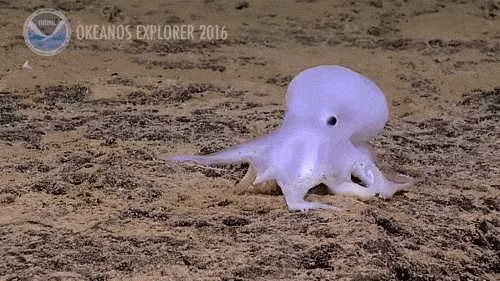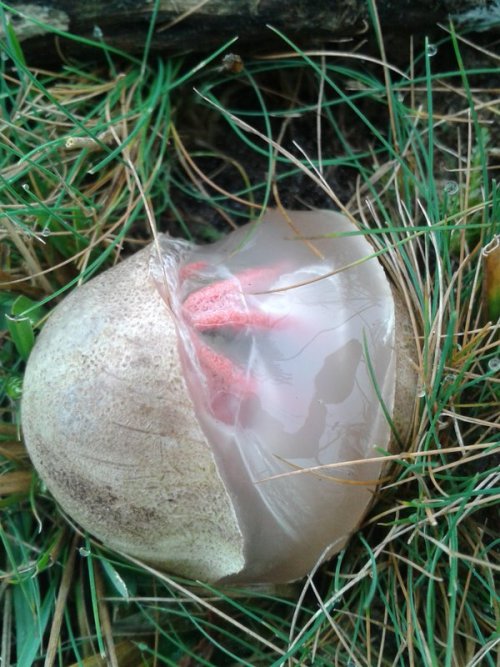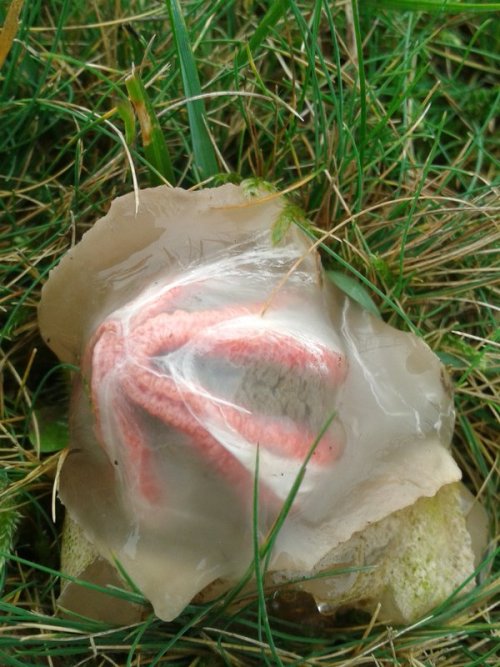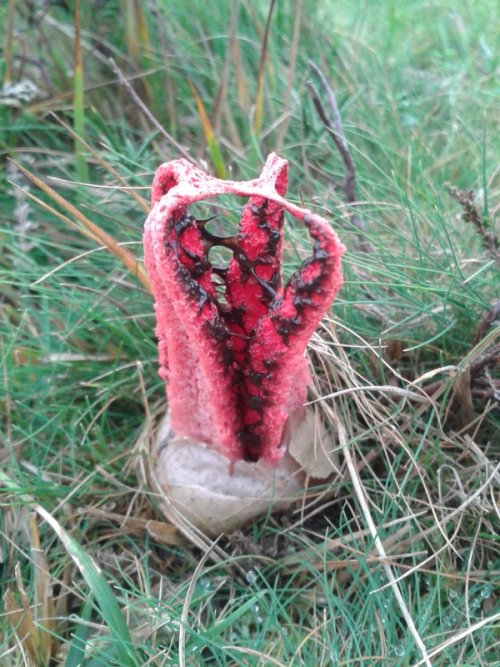Why Do Shuttles Orient Belly Up ?

The intricacies involved in launching a shuttle off the ground and successfully completing its mission is no doubt a meticulous task. Every move made during a launch is calculated and deliberate, nothing is left for chance.
On that note, having watched a couple of historic shuttle launches, this peculiar behavior caught my eye: the orbiter always faced the earth! ( The orbiter is the plane part of the shuttle)
Why do shuttles orient belly up ?
Protection against space debris
Upon entering the atmosphere, most space debris burn up. But out in space, without the protective blanket of our atmosphere, the space shuttle is exposed to all sizes and shapes of space debris ( also man-made ).

The space shuttle’s belly is designed to take up intense heat and pressure so that the shuttle doesn’t fall apart when it re-enters the atmosphere, and therefore best suited for taking hits from flying space junk
The Sun
Do you remember the heat-resistant space shuttle tiles that I posted about a couple of weeks back?

Putting the spacecraft with it’s bottom to the Sun it is these heat-resistant tiles on the bottom that are most exposed to the full power of the Sun.
This keeps the astronauts safer and cooler than they would be otherwise.
To maneuver
Wait, space shuttles maneuver in flight ? Yup ! For each mission the shuttle must be launched at a certain angle in order to accomplish the prescribed task.

Since the launch pad is fixed i.e you cannot change its angular orientation, the shuttle must perform the maneuver during the ascent in order to orient itself with the trajectory.
This maneuver is known as the Roll maneuver and is performed at a point about one minute or so after the launch.

The Atlantis performing a roll maneuver
Communication
Well, I think this thought might have already crossed your mind.
The belly down position assists in communication with the ground and allows instruments within the cargo bay to be pointed back towards Earth, which is required for many of the experiments carried within the bay.

Home, Sweet Home !
The reason why the shuttle’s cargo bay faces towards the earth has some psychological benefit as well.
The crew of the crew are given the spectacular views of our home planet glorifying the magnificence of its existence, rather than staring at the cold, dark void of space that lies afar.

More Posts from Llamaslikesciencetoo and Others

SPERM WHALE EVOLVED TO RAMMING
Herman Melville’s novel Moby Dick was inspired by historical instances in which large sperm whales (Physeter macrocephalus L.) sank 19th century whaling ships by ramming them with their foreheads. The immense forehead of sperm whales is possibly the largest, and one of the strangest, anatomical structures in the animal kingdom. It contains two large oil-filled compartments, known as the “spermaceti organ” and “junk,” that constitute up to one-quarter of body mass and extend one-third of the total length of the whale
Now an international team of researchers used structural engineering principles to test how the head of the sperm whale might be able to resist strong ramming impacts. Using computer simulations and working from published data on sperm-whale tissue and skeletal structure, scientists modeled impacts of varying types, and from a range of directions,what they found is the whale’s junk proved to play a vital role, with tissue partitions distributing much of the stress from ramming impacts and thereby preventing the skull from fracturing.
Although male sperm whales may not fight frequently, we know that aggressive ramming behaviour is a common characteristic in the group of mammals from which whales are derived – the even-toed ungulates, the artiodactyls.
Illustration: Schematic representation of sperm whale head structure, courtesy of Ali Nabavizadeh.
Reference: Panagiotopoulou et al. 2016. Architecture of the sperm whale forehead facilitates ramming combat Peerj

This is that paper I was telling you all about by the paleontologist at my university, Dr. Plotnick; give it a read!

“Indeed, despite programs designed to interest girls in STEM, GoldieBlox, and supermodels celebrating the virtues of coding, the fields are still overwhelmingly male and seem virtually resistant to change. Jahren, a geochemist and geobiologist, argues that the problem is hardly one of enthusiasm, but rather widespread sexual harassment in the fields that, unsurprisingly, goes unpunished.
The kind of sexual harassment Jahren describes is hardly that of a Mad Men episode: groping and outright dickishness are easier to label and condemn as sexual harassment (and it’s worth noting that STEM has a problem with that too).
Rather, it’s the kind that prioritizes men’s feelings, and their expression of them, over the simple act of treating a woman as a professional colleague. Jahren persuasively argues that the persistence of this kind of behavior—the constant demand from both male colleagues and academic advisors that their feelings be acknowledged and legitimized—is one of the reasons women leave STEM fields.
An email forwarded to Jahren by a former student asking her advice typifies the problem:
[The student] forwarded an email she had received from a senior colleague that opened, “Can I share something deeply personal with you?” Within the email, he detonates what he described as a “truth bomb”: “All I know is that from the first day I talked to you, there hadn’t been a single day or hour when you weren’t on my mind.” He tells her she is “incredibly attractive” and “adorably dorky.” He reminds her, in detail, of how he has helped her professionally: “I couldn’t believe the things I was compelled to do for you.” He describes being near her as “exhilarating and frustrating at the same time” and himself as “utterly unable to get a grip” as a result. He closes by assuring her, “That’s just the way things are and you’re gonna have to deal with me until one of us leaves.”
It’s hard to imagine that the sender of the email thought that it would earn him the romantic admiration of his female colleague, coupled as it is with a vague threat likely meant to convey the authentic intensity of his attraction. And yet, as Jahren writes, this behavior has “been encountered by every single woman I know.”
Read the full piece here





Killer whales are smart animals. This is what they do in their natural habitat:

Not this:




Meet the orchid mantis.
Orchid mantises—particularly juveniles—seem aptly named. They’re predominantly white with pink or yellow accents, similar to some orchids and other flowers, and their four hind legs are lobed, like petals. But if you search for an exact floral counterpart, as behavioral ecologist James O’Hanlon did, you probably won’t find one. “I spent forever looking for a flower that they look just like,” he says, to no avail.
As it turns out, rather than mimicking one floral species, the insect instead may embody a “generic or an average type of flower” in order to attract bees and other pollinating insects as prey.
What’s more, as far as O’Hanlon can tell, it’s the only animal on record that “takes on the guise of a whole flower blossom” as a predatory strategy.
Learn more here.


The Okeanos Explorer has discovered a very cute octopus at a depth of 4,290 metres.
This is the deepest an octopus of this particular sub order of octopus has ever been seen.
The National Oceanic and Atmospheric Administration noted this is a completely unsubscribed species and perhaps not belonging to any specific genus. Highlighting how little we still know about the creatures in the depths of our oceans.
(Ocean Explorer)
How do you think they'll dispose of Tillikums body? :/
They’ll probably do a necropsy after he dies to determine the exact cause of death. After that, I’m not sure what they’ll do. Normally they don’t tell anyone what happens to the animal’s body after they die. Perhaps since Tilikum is so well-known they’ll give him a proper burial/memorial? I’ve heard somewhere before (but for the life of me cannot remember where, so don’t take this as a fact) that Kalina is buried somewhere on the property of SeaWorld Orlando.
I know I’ve read that in Kamogawa Sea World they bury the dead orcas in a cherry blossom garden, which I think is very nice and respectful.




World’s largest concentrated solar plant switches on in the Sahara
Morocco has switched on what will be the world’s largest concentrated solar power plant. The new site near the city of Ouarzazate could produce enough energy to power over one million homes by 2018 and reduce carbon emissions by an estimated 760,000 tons per year, according to the Climate Investment Funds (CIF) finance group.
As His Majesty Mohammed VI of Morocco pressed a button on 4 February 2016, the first phase of the three-part project was set in motion.
The solar plant, called the Noor complex, uses concentrating solar power (CSP) which is more expensive to install than the widely used photovoltaic panels, but unlike them, enables the storage of energy for nights and cloudy days.
Mirrors focus the sun’s light and heat up a liquid, which, when mixed with water, reaches around 400 degree Celsius. The steam produced from this process drives a turbine and generates electrical power.
A cylinder full of salt is melted by the warmth from the mirrors during the day, and stays hot enough at night to provide up to three hours of power, according to World Bank, who partially financed construction of the plant through a $97 million loan from the Clean Technology Fund.
“The returns on this investment will be significant for the country and its people, by enhancing energy security, creating a cleaner environment, and encouraging new industries and job creation,” said Marie Francoise Marie-Nelly, World Bank Country Director for the Maghreb.
read more here




(image credit to Dan Hoare on twitter)
I ONLY JUST LEARNED ABOUT THE EXISTENCE OF THIS MUSHROOM????? WHICH ERUPTS FROM AN EGG BEFORE UNCURLING HELLISH ARMS, EXPOSING ITS STICKY MASS OF SPORES TO BE SPREAD BY FLIES ATTRACTED BY THE SCENT OF ROTTING FLESH???
Admittedly, I am easily won over by all organisms that attract flies with the scent of rotting flesh. But the octopus stinkhorn (Clathrus archeri) also has tentacles, a freaky egg stage, and blackish goop, so it’s my favorite now.
-
 liqwetwind reblogged this · 4 years ago
liqwetwind reblogged this · 4 years ago -
 baby-a-in-trenchcoat liked this · 5 years ago
baby-a-in-trenchcoat liked this · 5 years ago -
 bolojeco liked this · 5 years ago
bolojeco liked this · 5 years ago -
 bluebellchapel liked this · 5 years ago
bluebellchapel liked this · 5 years ago -
 go-wind-stuff reblogged this · 5 years ago
go-wind-stuff reblogged this · 5 years ago -
 fattyhenry liked this · 6 years ago
fattyhenry liked this · 6 years ago -
 underhiseyez liked this · 6 years ago
underhiseyez liked this · 6 years ago -
 inconstantsearchofperfection reblogged this · 7 years ago
inconstantsearchofperfection reblogged this · 7 years ago -
 kennytomaras liked this · 7 years ago
kennytomaras liked this · 7 years ago -
 timfly88-blog liked this · 7 years ago
timfly88-blog liked this · 7 years ago -
 annabethjacksonchasepercabeth liked this · 7 years ago
annabethjacksonchasepercabeth liked this · 7 years ago -
 garnetsanddragons reblogged this · 8 years ago
garnetsanddragons reblogged this · 8 years ago -
 garnetsanddragons reblogged this · 8 years ago
garnetsanddragons reblogged this · 8 years ago -
 garnetsanddragons reblogged this · 8 years ago
garnetsanddragons reblogged this · 8 years ago -
 willkill4pudding reblogged this · 8 years ago
willkill4pudding reblogged this · 8 years ago -
 x-15 reblogged this · 8 years ago
x-15 reblogged this · 8 years ago -
 cinemadetectives liked this · 8 years ago
cinemadetectives liked this · 8 years ago -
 downthetubes reblogged this · 8 years ago
downthetubes reblogged this · 8 years ago -
 downthetubes liked this · 8 years ago
downthetubes liked this · 8 years ago -
 1234mahamad liked this · 8 years ago
1234mahamad liked this · 8 years ago -
 slippperybob reblogged this · 8 years ago
slippperybob reblogged this · 8 years ago -
 soulless-blunder reblogged this · 8 years ago
soulless-blunder reblogged this · 8 years ago -
 soulless-blunder liked this · 8 years ago
soulless-blunder liked this · 8 years ago -
 munchoblog reblogged this · 8 years ago
munchoblog reblogged this · 8 years ago -
 munchoblog liked this · 8 years ago
munchoblog liked this · 8 years ago -
 bcourchaine liked this · 8 years ago
bcourchaine liked this · 8 years ago -
 gifs-n-shits reblogged this · 8 years ago
gifs-n-shits reblogged this · 8 years ago -
 jetpackturtlesfanservice liked this · 8 years ago
jetpackturtlesfanservice liked this · 8 years ago -
 jonathan70333 liked this · 8 years ago
jonathan70333 liked this · 8 years ago -
 leventunoecinquantasette liked this · 8 years ago
leventunoecinquantasette liked this · 8 years ago -
 superearthyem-blog reblogged this · 8 years ago
superearthyem-blog reblogged this · 8 years ago -
 agitx liked this · 8 years ago
agitx liked this · 8 years ago -
 inconstantsearchofperfection reblogged this · 8 years ago
inconstantsearchofperfection reblogged this · 8 years ago -
 inconstantsearchofperfection liked this · 8 years ago
inconstantsearchofperfection liked this · 8 years ago -
 sherif713 reblogged this · 8 years ago
sherif713 reblogged this · 8 years ago -
 sherif713 liked this · 8 years ago
sherif713 liked this · 8 years ago
Mainly interested in ecology, but also the entirety of science.
179 posts